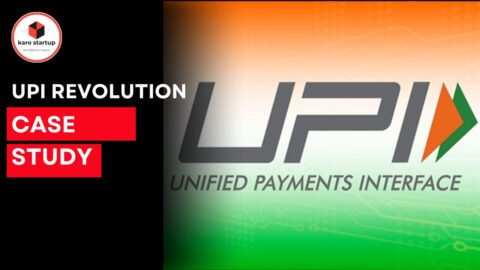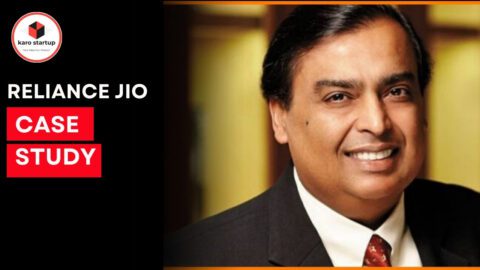Overview Zepto business model :
One of these new services that emerged in today’s fast world of quick grocery delivery is Zepto. Launched in 2021, Zepto delivers groceries in under 10 minutes to change what people expect and create a new trend in convenience. In this blog, let’s look at the Zepto business model, ways to earn money, and strategies which helped Zepto grow fast and become a unicorn in short time.
In this close look, we will demonstrate how Zepto ran its operations well, dealt with the competition, and planned to grow the business even more. Want to know how a company like Zepto changed the usual grocery business, or want to learn how to get excited about your next business idea? Keep reading.
About Zepto
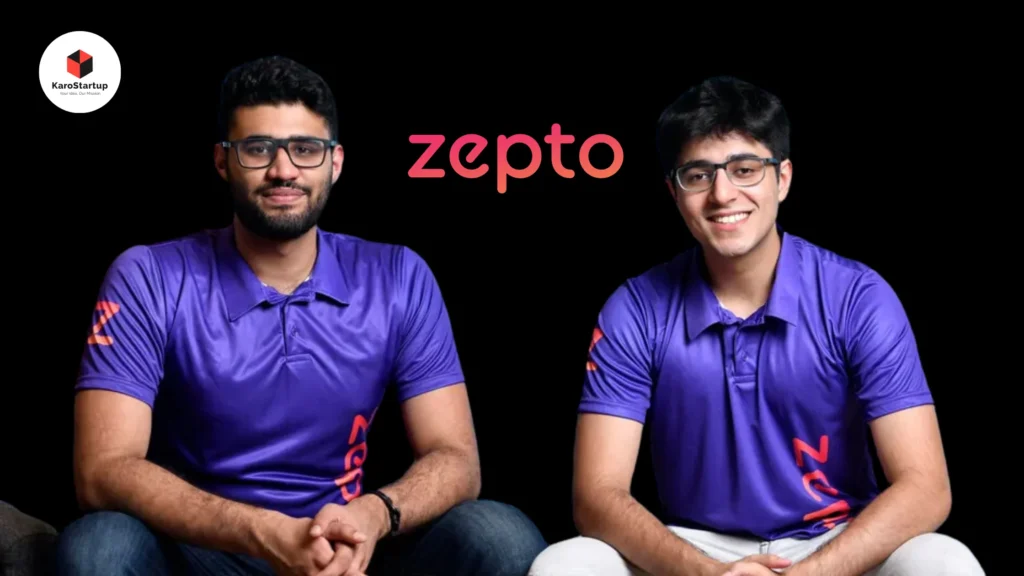
Aadit Palicha and Kaivalya Vohra, both former students of Stanford University started Zepto. It aimed to deliver groceries in India very fast. The company is based in Mumbai but works in other cities, using “dark stores” to finish orders in less than 10 minutes. Dark stores are small warehouses found in important locations to make delivery fast.
There are also competitors like Blinkit, Swiggy Instamart, and BigBasket. However, the main competitive edge of Zepto is its strong focus on speed and efficiency. In the last five years, Zepto has raised more than $1.6 billion in investment and increased its value to about $5 billion in 2024. All of these resulted from the new use of technology, a better understanding of what customers want, and fast growth in major cities in India.
Zepto Business Model :
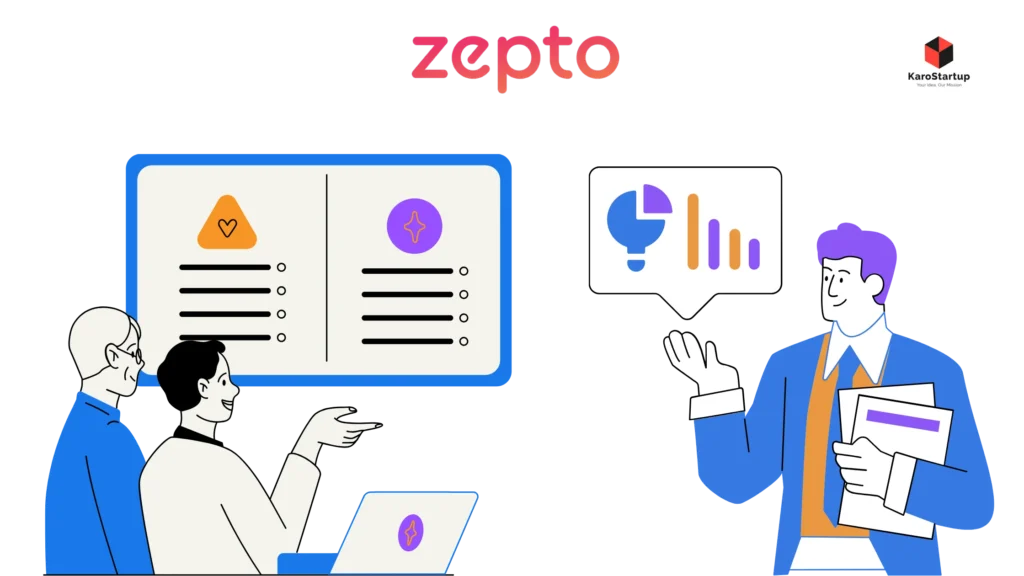
Zepto business model is quick commerce or “q-commerce,” through which it uses dark stores, a strong supply chain, and AI-driven logistics, delivering groceries in under minutes. A new-age business model, Zepto’s business model is a game-changer in the quick commerce space, offering a unique solution to the challenges of traditional grocery delivery. It’s a prime example of how innovative approaches can disrupt established industries and meet evolving consumer needs.
Let’s look at how Zepto business model actually breaks down:
Value Proposition
One of the most important benefits of Zepto’s business model is speed. The company says it will deliver groceries in 10 minutes.
Zepto addresses the problem of grocery needs at the last moment for the urban customer. With a mean delivery time of 8 minutes and 47 seconds, Zepto has nailed the science behind convenience perfectly. Consumers are expected to receive a wide variety of products ranging from fresh groceries to household supplies at competitive prices, and most of the time free of shipping charges.
Instant gratification is very powerful and changes everything in the market
Hot Topics : OpenAI Success Story: How Innovation Transformed AI
Zepto Revenue Model
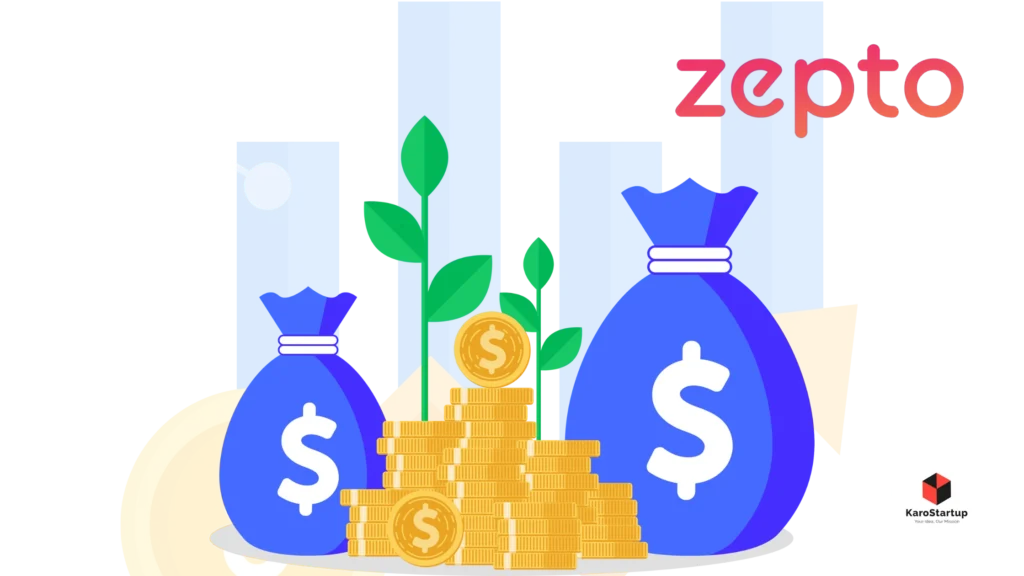
Zepto Business model primarily has a revenue model mainly built around a few core aspects of business strategy put in place in the quick commerce sector. Here is an overview of the key aspects of the revenue model by Zepto:
- Sales of Products
It makes money by selling groceries, home goods, and personal care products directly on its website. All of these products come from local suppliers and brands, ensuring that prices are very low. Markups: Although the company of Zepto is engineered for fast delivery, at times it charges markups on some products compared to the retail price in regular markets also adds to its revenue. - Delivery Charges
Zepto charges customers service fees to deliver. The fees are dynamic, depending on the distance of delivery, the order size, or any special offers. This is a direct source of income for them, and it supports the expense of fast delivery costs. - Subscription Models
Membership Plans: A few grocery websites have membership plans for regular customers offering extra benefits, such as free delivery or special discounts. In this case, since Zepto also has a similar system, the transactions might be really easy. - Advertisement and Promotions
Brand partnerships: Zepto will partner with brands so that money can be made from advertisements on the platform. Brands will get more visible and free recharge by paying in return. For example, it could be on special spots for products or as a part of a campaign. In-app Promotions: Earn money from creating special offers in the app, like coupons and offers, that attract people and make them spend more. - Data Monetization
Insight for the Consumers: With a large number of users and useful buying information, Zepto can provide insights to brands and suppliers using their data. This helps them understand the market and how consumers are behaving. - Fulfillment and Logistics
The operating scale would then enable Zepto to offer logistics capabilities to other businesses and therefore create another revenue stream from logistics and fulfillment services. - New Category Expansion
Diversification : Zepto expands its line of products beyond groceries to electronics, health products, or prepared meals. This will allow the company to unlock additional sources of revenue. - Challenges and Implications
Pricing Pressure: Since the competitive pricing among the competitors is impacting margin profit, Zepto will also balance this between delivery speed and profitability. Customer Retention: Loyalty programs or good service help keep customers for long-term, steady income.
Operational Efficiency: The logistics and delivery systems must be kept cost-effective for controlling costs and maximizing revenue.
Given that Zepto business model operates on a dark store model, which inherently keeps its operational costs low, Zepto can maintain razor-thin profit margins while driving high volume .
Customer Segments
Zepto business model serves to cater mainly to young individuals, such as millennials and Gen Z, who wish for quick, easy service. It also reaches busy working professionals and families who prefer a simple experience in grocery shopping.
The company has established a strong rapport with these groups with special offers and consideration to all the needs of the customers. Today’s business world may have way to keep mobile app users engaged and loyal as real-time tracking of order status.
Key Resources and Partnerships
Some of the important resources for the Zepto business model are:
- Dark Stores: They are small warehouses located 2-3 kms from potential customers. This saves time while delivering.
- AI and Technology: In-house-built proprietary algorithms help speed up inventory management and improve routing planning.
- Strategic Alliances: They collaborate with local distributors and national brands in the production to ensure a constant supply of the product. This partnership with big providers helps them sell special products. These resources enable Zepto to save money by allowing it to offer a lot of other products to its customer
These resources provide Zepto with economies of scale in offering a wide-range product portfolio for its customers.
Cost Structure
The two biggest costs in Zepto business model are:
- Technology Development: This includes the costs for developing and maintaining a mobile app, AI systems, and the back-end setup.
- Inventory and Supply Chain Management: Includes all the direct costs associated with the dark stores, the products acquired, and any logistics related to them.
This means getting customers through ads and special deals. This will be very expensive for Zepto.
The Zepto business model controls costs by making the supply chain better and using dark stores, which are much cheaper to operate than regular stores. Having scale gives a huge advantage because the number of orders increases.
Competitive Advantage
One of the biggest strengths of Zepto business model is that it lets groceries be delivered much faster than any other competitor.
This is possible due to the dark stores the company has invested in and the AI-driven logistics they have created. This makes it hard for companies like BigBasket, Blinkit, and many others that use a more traditional e-commerce model to compete.
Most importantly, Zepto gets to know which city the customers want, and helps make that happen through the app. That kind of support is useful for Zepto when customers come visiting.
Zepto SWOT Analysis
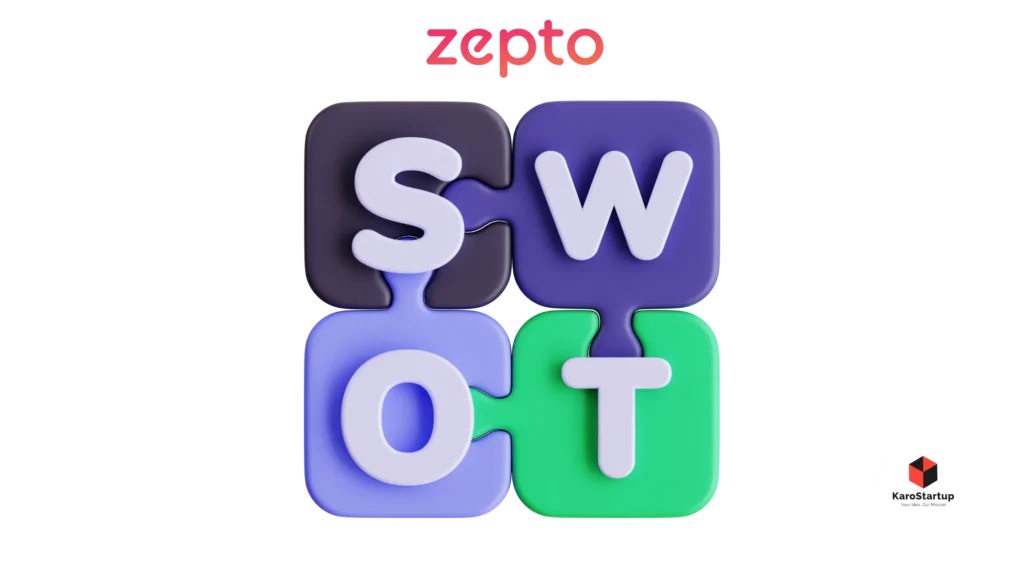
Strengths
- Fast delivery: It promises that the groceries would be delivered in 10 minutes; that’s one of the reasons customers came to this place.
- Strong Funding: Provided by a large amount of money from investors, this provides for safety and resources for growth.
- User-Friendly App: The design will be simple and very easy to use.
- Working with regional vendors and brands help deliver goods better.
Weakness
- High Operating Costs: Quick delivery demands a good logistics system, which is very expensive.
- Limited Product Line: Grocery products may not attract such many customers as that of the competitors having a wider product line.
- Dependence on Urban Areas: Concentration of interest in major urban centers would limit the geographic reach and expansion of the market. Service Consistency: Rapid growth may induce fluctuations in the quality of service.
Opportunities
- Market Growth: There is an opportunity to grow in small towns and countryside areas, reaching a new kind of customers.
- Different Products: Creating new products, including non-food items or services, can bring in new customers. More people are buying things online, which is a great market for this.
- Sustainability Initiatives: Starting eco-friendly practices will help improve the brand’s reputation and attract mindful shoppers
Threats
- Market Saturation: The grocery delivery market is highly competitive, especially with the likes of BigBasket, Swiggy Instamart, and Blinkit, among many other popular companies. When more companies enter the market, it can make growth slower.
- Economic Factors: Economic recession or inflation decreases the purchaser’s purchasing power.
- Regulatory Challenges: Changes in government rules about online shopping and delivery services can cause issues.
Future Perspective
Zepto aims to further expand and add over 700 dark stores by March of 2025. The firm is going to expand at a very rapid pace in markets where it already has a presence. Moreover, the company is also introducing new concepts that make use of AI for suggesting personal products and for sustainable packaging, an idea that would appeal more to customers who are health and eco-conscious.
Conclusion
Zepto has successfully combined technology, speed, and efficiency to give customers what they want. By focusing on very fast delivery and improving the supply chain, Zepto has created a model that is strong and can grow easily. Business innovators looking to change old industries could learn from Zepto’s focus on customers and their readiness to invest in the right tools.
FAQ’s
What is Zepto?
Zepto is an e-commerce quick-commerce business that started operating since 2021 and just-in-time grocery delivery in under 10 minutes. Founded by Aadit Palicha and Kaivalya Vohra, Zepto operates primarily in urban cities across India through the use of “dark stores” for effective logistics.
How Does Zepto Provide Fast Delivery?
Zepto achieves its speed through strategically placed dark stores located at 2 to 3 kilometers from its customers. In combination with AI-infused logistics for optimized routing, the median delivery times are under 9 minutes.
How does Zepto work?
Zepto business model operates by using dark stores to complete orders of online grocery products delivered in just 10 minutes. The app is where an order is placed through, and the AI optimizes routes in delivery.
Who are Zepto’s main competitors?
Zepto competes with other grocery delivery service providers like Blinkit, Swiggy Instamart, and BigBasket. Its pricing and focus on speed and efficiency differentiate it in the marketplace.
Who are the target customer segments at Zepto?
Zepto’s core target customer is the urban millennial and Gen Z customer who puts huge value on speed and convenience, as well as busy professionals and families who seek easy grocery solutions.
How does Zepto plan to grow in the future?
Zepto aims to expand its network to over 700 dark stores by March 2025 and is focused on scaling operations in new markets. It is also exploring innovations like AI-driven personalized product suggestions and sustainable packaging.
Is Zepto available in my city?
Zepto is present mainly in big cities across India. You can check inside the app or their website to see if they deliver to your location.
Valuation of Zepto?
Zepto achieved a valuation of about $5 billion in 2024


